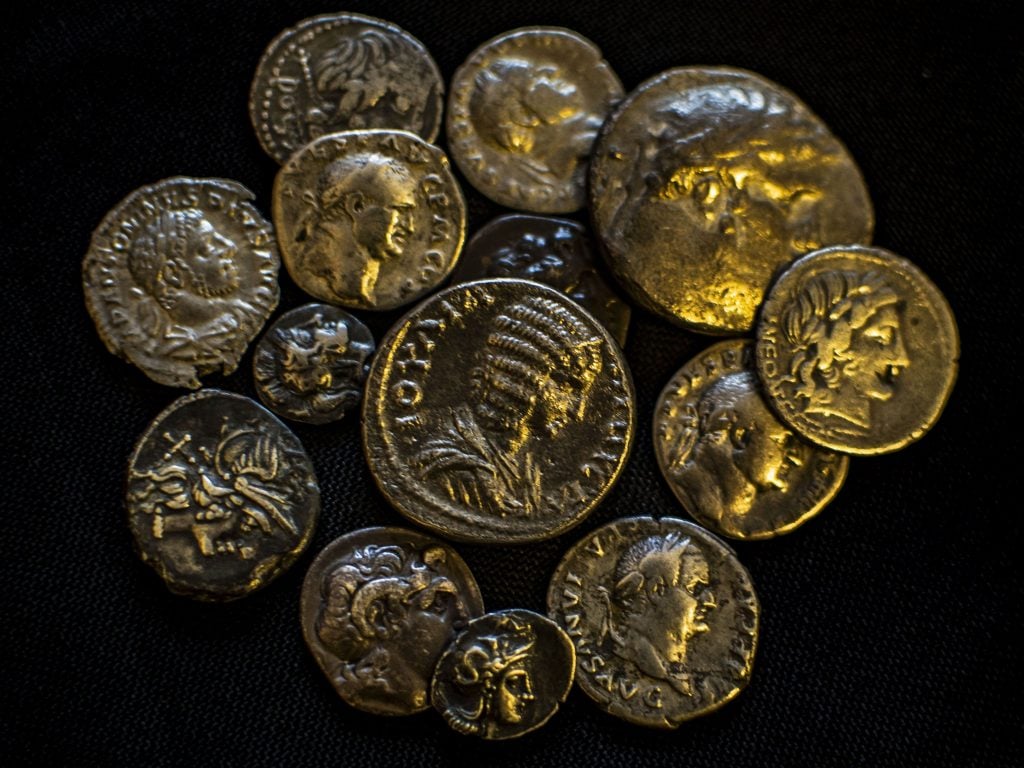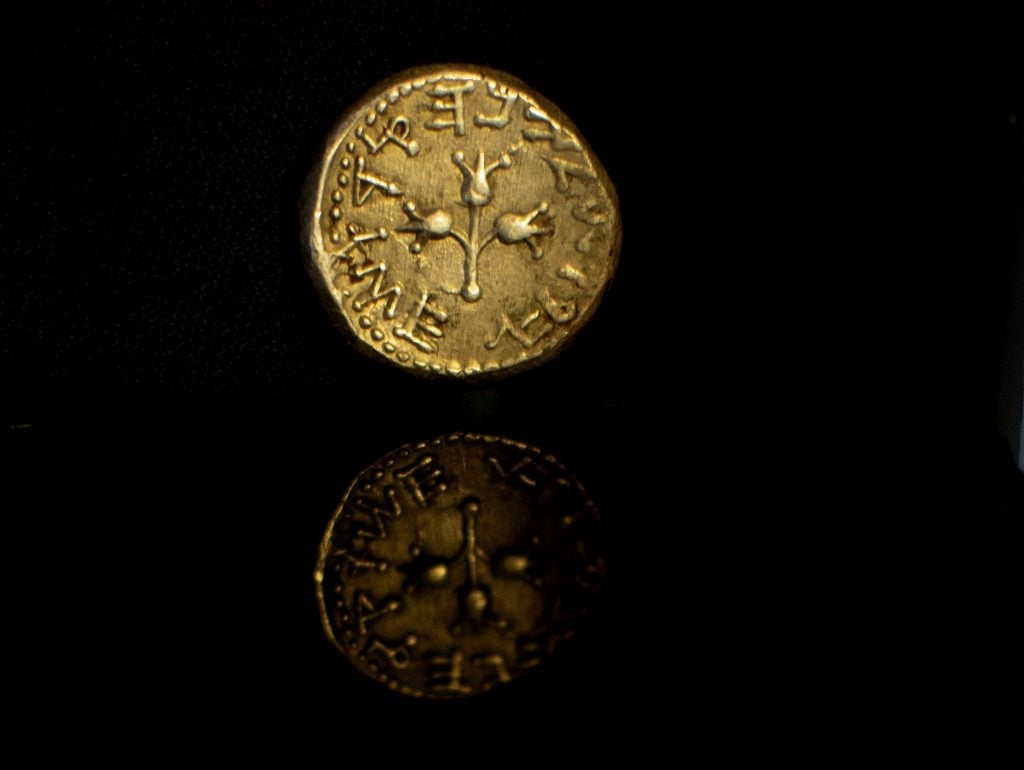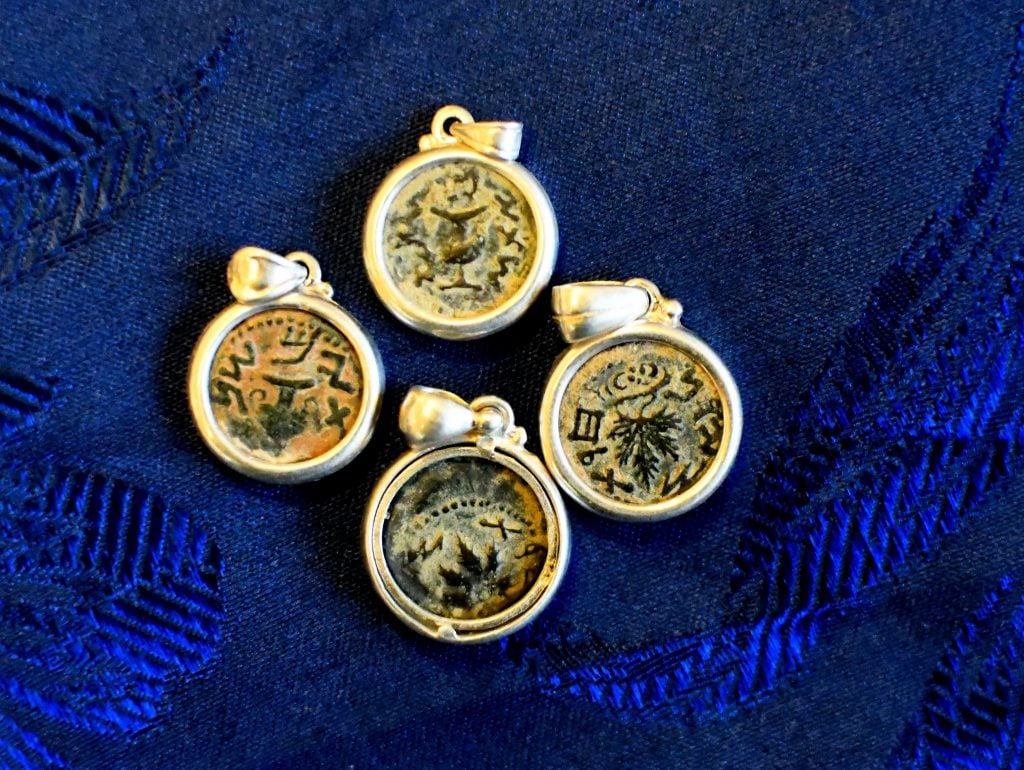Crime
Israel’s Antiquities Authority Busts Dealer for Possession of Hundreds of Looted Artifacts, Including a Great Revolt-Era Coin
The seizure featured a historically significant silver shekel.

The seizure featured a historically significant silver shekel.

Amah-Rose Abrams

In one of its most significant seizures, the Israel Antiquities Authority recently raided an unauthorized dealer in the city of Modiin and recovered hundreds of items—including a nearly 2,000-year-old silver shekel, along with jewelry, 1,800 other coins, and a bronze statue—all believed to have been looted.
Members of the Anti-Robbery Unit of the Antiquities Authority found fresh soil on the coins, suggesting that they had been dug up very recently. This has raised new questions about the extent of looting in this antiquity-rich part of the world.

The Modiin haul. Photo: Yuli Schwartz, courtesy of the Israel Antiquities Authority.
“It’s heartbreaking to think about the many antiquity sites that have been destroyed for the sake of greed of traders of heritage values,” Ilan Hadad, the authority’s supervisor of antiquities trade, said in a statement. “It’s the history of all of us, [which] will no longer be possible to recover.”
The shekel is engraved with the term “Holy Jerusalem” and the name Shimon, the leader of the 132–136 C.E. Bar Kohkba revolt, lending it great historical significance. Discovered in the dealer’s workroom, the coin—which dates from 67 C.E., the time of the first Jewish-Roman war, also known as the Great Revolt—had been partially cleaned to reveal three flowers and the inscription “one shekel Israel second year.”

The Modiin haul. Photo: Yuli Schwartz, courtesy of the Israel Antiquities Authority.
“Antiquities Authority supervisors struggle day and night with the phenomenon of antiques robbery and the illegal trade in antiques,“ Eli Escuzido, the director of the Antiquities Authority, said in a statement. “The ancient treasures belong to the state and the public; each coin has a unique story through which you can learn about the history and heritage of the country.”

The Modiin haul. Photo: Yuli Schwartz, courtesy of the Israel Antiquities Authority.
The Antiquities Robbery Prevention Unit is investigating where the dealer obtained the objects and coins. Once they have traced the origins of the haul, they intend to charge both the dealer and their suppliers.
“Unauthorized antiques traders who purchase robbed and stolen coins encourage the robbery of antiques, which are torn from the historical nail. The Antiquities Authority will continue to act in collaboration with other enforcement bodies to curb the illegal trade in antiques,” Escuzido’s statement concludes.